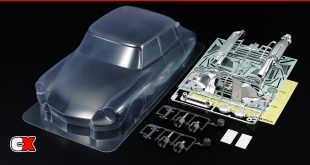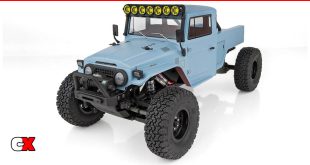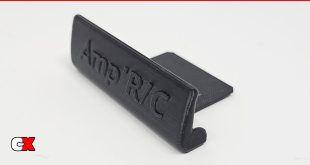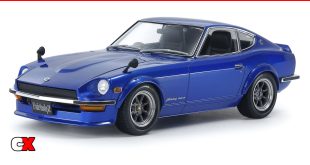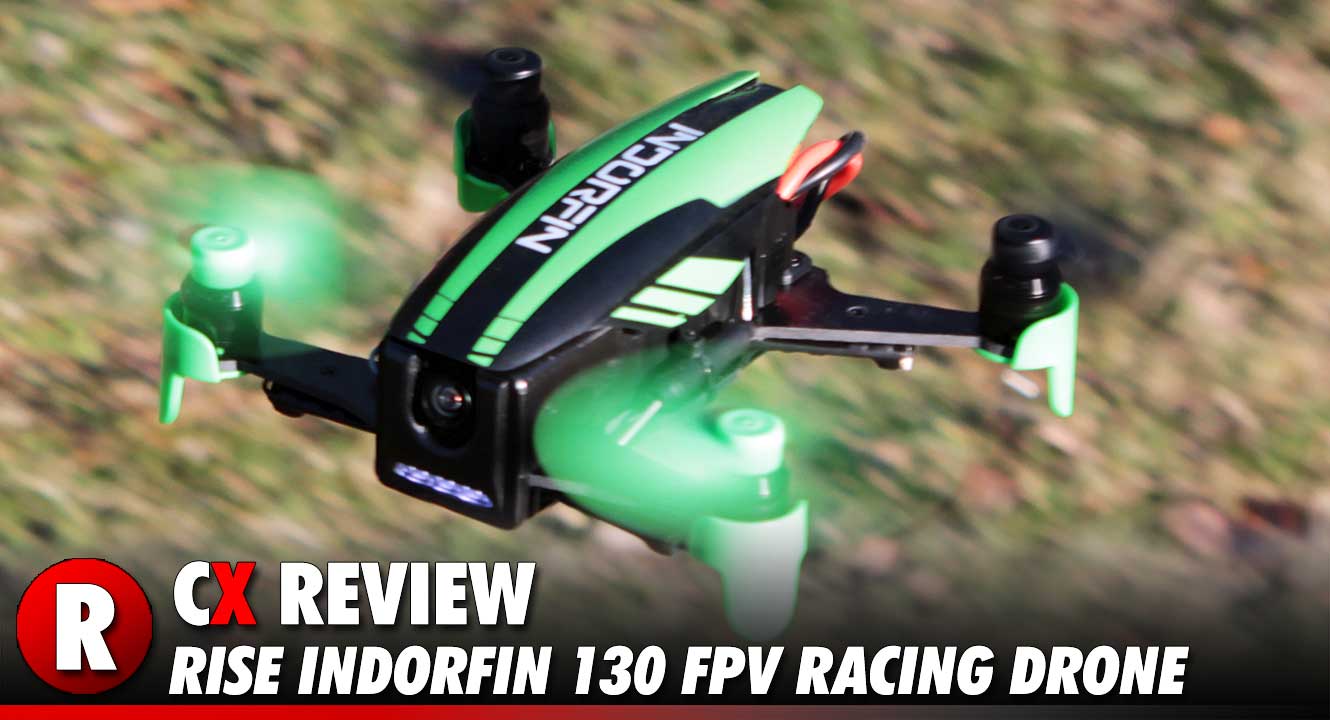
Words and Photos By Mini Guinea
Mini and micro FPV rigs are all the rage these days. Just a few short years ago, everyone was running 240-250mm size drones, sporting 5-inch props and beefcake batteries, however, 3-inch machines (or smaller) are what nearly everyone wants currently. Keeping with the current trend, RISE has just released their Indorfin 130 Brushless FPV Race Drone. Using the Ubiquitous 1104 motors, the Indorfin combines speed, durability and ease of use in a machine right out of the box.
Product: RISE Indorfin 130 Brushless FPV
Part Number: RISE0210
Type: FPV Indoor/ Outdoor Drone
Price: $299.99
Recommended For: Three Inch Thrill Seekers
Features
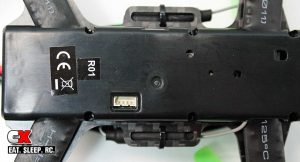 Airframe
Airframe
Like most 120-250 class FPV rigs, the Indorfin relies on a carbon fiber uni-body plate as its backbone. The 2.5mm main deck plays host to the center pod and flight controller, as well as the ESC’s and finally, the motors. The center pod is essentially a battery bay with a nifty little door out back to keep the pack secure, but the cam/vTX is also stuffed up front. The PDB/Flight controller sits right below the main frame and battery pod, protected from any crash damage.
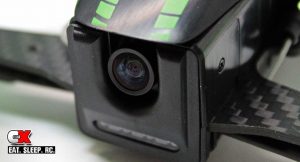 FPV Goods
FPV Goods
RISE initially advertised the Indorfin as either 25 or 200mW, much like their popular Vusion 250 Race Drone. However, with the shakeup in distributorship/marketing, it remains to be seen exactly how the machine will be packaged for end sale. Our test unit was bereft of any markings that would denote whether it was 200 or 25mW, but a quick glance with the spectrum analyzer confirmed we were operating right around 25mW. The 600TVL Camera/vTX appears to be akin to the one used on the House Racer … and while that setup is mighty fine on the brushed model, we’ll see how it stacks up on a full-fledged brushless racer. It’s secured in a pivoting mount that allows it to be tilted anywhere from flat to 40 degrees or so. Also a super nice touch is the LED screen on the back of the vTX that displays the channel and band that is selected.
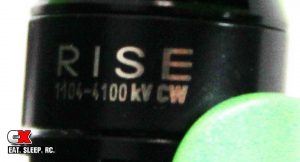 Flight Electronics
Flight Electronics
No matter what completion level of the Indorfin, they will all come with the same F3 Betaflight compatible flight controller. That means it will be super easy to setup and tune, even for novices to PID’s, GUI’s, and such. RTF models will assuredly be packaged with the J2000 transmitter and we have no complaints there as the radio is easy and comfortable to use with our other RISE machines. The ESC’s are hard-mounted underneath each arm, keeping them cool, yet protected and they are plug-and-play, so if you ever need to replace one, it will be a sans solder experience. At the business end of each arm is an 1104 4100Kv brushless motor spinning a 3-blade prop. That’s nearly 35.000rpm on each propeller and that translates to powerful punch-outs and bursts of speed like no brushed machine can dream of.
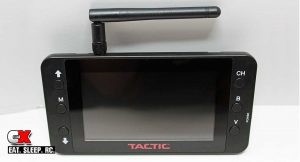 Optics
Optics
Like other RTF offerings from RISE, our RTF Indorfin came supplied with the Tactic 4.3 inch monitor/DVR and head set. The head set is a bit cumbersome, but it provides the fully immersive FPV experience at a fraction of what it would cost to include a full-blown set of goggles. Besides, once you do save up for a proper set of goggles, you can keep monitor to record your FPV exploits as it can stow up to a 32GB micro SD card for plenty of footage. The receiver in the monitor is also mighty capable for the money it costs, pulling the full range of 40 channels, including race band, but it also has a channel scan feature to find your model when you forget what channel/band you set it up on. The standard stick antenna leaves a little to be desired, range-wise, so be sure to snag an omni-directional replacement with an RP-SMA thread.
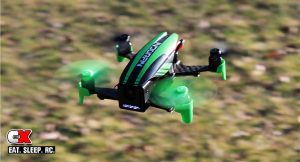 Flight Modes
Flight Modes
Much like earlier offerings from RISE, the Indorfin comes pre-programmed with three distinct flight modes. That means everyone from the greenest of training pilots to seasoned pros should feel right at home with the little green and black rocket ship.
ANGLE MODE – Allows those just transitioning from brushed models to cut their teeth with something much more powerful, but without giving them too much at once. In this mode, all three accelerometers are working hard to keep the Indorfin level and upright, but they also limit the bank angle in any direction to a maximum of 55 degrees. That means no matter how hard you bang the sticks, you will not be able to invert the model.
HORIZON MODE – Gives pilots much more freedom with the controls, but keeps the accelerometers on for self-leveling. In Horizon, there are no longer any bank limits, so you can flip and loop the Indorfin, but still have the security of self-leveling when needed or wanted.
ACRO MODE – Is for experienced throttle junkies only. In this mode, only the gyros are employed, so there is no self-leveling whatsoever. The attitude and orientation of the machine is left solely to your thumbs, so they better be polished lest ye be crashin’.
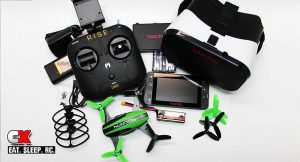 RTF or FPV-Ready
RTF or FPV-Ready
As mentioned before, we are still unsure of how the Indorfin will be sold. If Horizon follows the same recipe that Hobbico first wrote for the RISE machines, we can expect a full RTF version that requires nothing but an eager pilot as well as an FPV-Ready version that includes the drone and flight battery, leaving the end user to provide their own radio system and goggles. For our test purposes, we were provided with an RTF package.
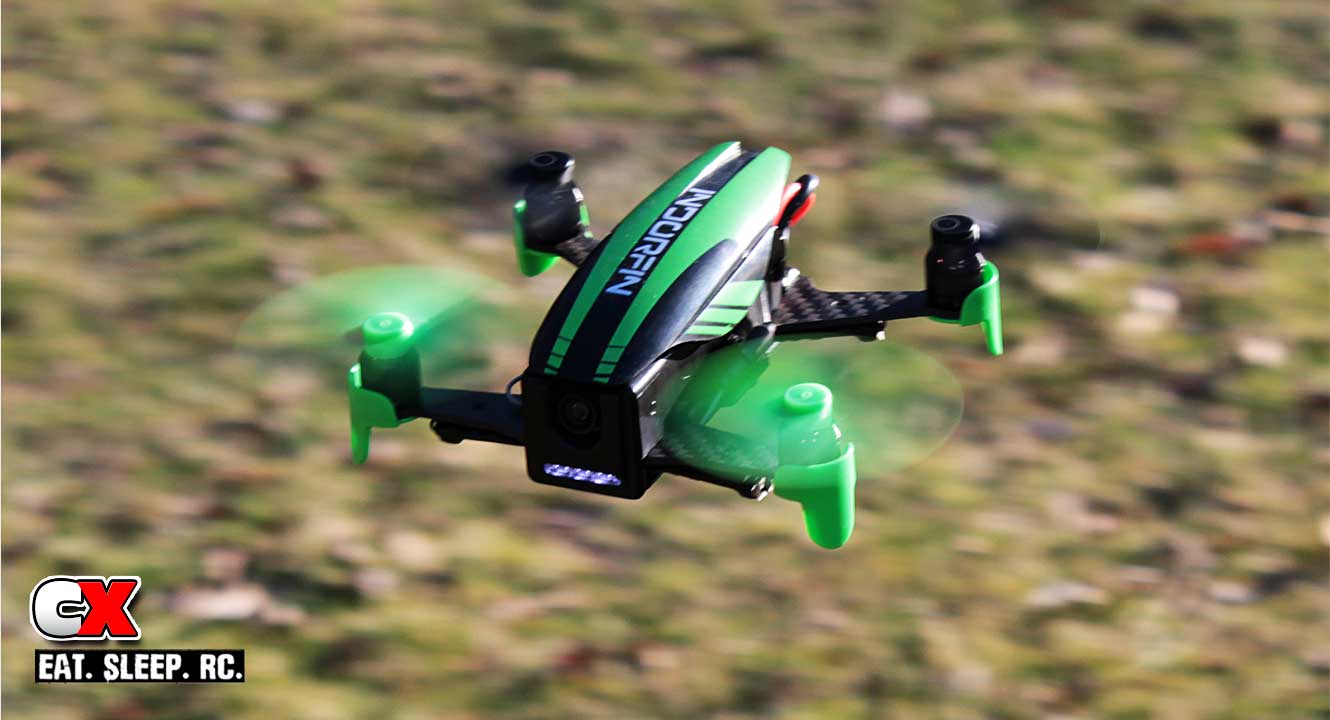
Flight Time
Once the stock battery is charged and ready to rip, it’s as simple as sliding it into its port and plugging it in … sort of. On such a small machine, care must be taken to keep the battery wires from the spinning props and the Indorfin is no different. The small XT-30 lead can be twisted before plugging it in, thus keeping it below the props, but the balance lead is a little more difficult to hide. Our simplest solution to gain piece of mind while aloft was to place a small piece of Velcro under the very rear of the canopy and a corresponding piece on the balance plug, keeping it secure under the hood.
One plugged in and armed, moving the throttle stick down and right will arm the motors (a single beep will signal the arming). We started out in Angle Mode and low rates, but that didn’t last long. To our experienced thumbs, this flight mode and rate felt sluggish, but it’d be perfect for those just learning to tame their thumbs. If so inclined, you could literally and the sticks from end to end in this mode and it will not upset the Indorfin.
Flipping up to Horizon Mode, the model comes alive. We found this mode to be best for ripping through gates and trailing other models for tandem runs. Full throw for flips and rolls, especially in high rates, were super fun, especially knowing we could center the sticks to allow the accelerometers to level the Indorfin if we weren’t on point.
Acro Mode is most certainly not for the faint of heart and since the attitude of the Indorfin in this mode is all dependent on the thumbs, we recommend only experienced pilots use it. If flying crazy freestyle and diving tall objects in your thing, Acro is your flight mode. It’s also mighty fine for those who are accustomed to sliding through race gates to setup the next section before you’re through the first one without the accelerometers interrupting your flight.
Essentially, Angle Mode is for beginners, Acro is for seasoned pros and Horizon is for both … depending on whatever tickles your fancy. In all modes, the Indorfin is fast, but in Acro and Horizon, it’s straight-up silly fast, especially on only 3S power. The stock RTF setup and tuning with the J2000 transmitter is a bit “soft” for our tastes, but a quick reset with the Betaflight Configurator had the model flying awesome. Since we spent most of our air time in Horizon mode, the logical next step was to increase the gain slightly across the PID’s in that mode, which worked out beautifully.
The power and speed of the Indorfin on 3S LiPo is excellent, given the prop size quite a bit under the 3 inch mark. A couple things worth noting: First, the flight controller must be as level as possible while initializing. If it isn’t, it tends to wobble a bit around center. Second, it’s a bit of a pain to change the vTX channel … as in, you have to remove the canopy. Third, make sure the balance lead is securely out of the way before flight. Fourth and as mentioned before, you can use any radio system with the Indorfin by purchasing the optional RISE harness (RISE2141), but the plug for said harness is smack on the bottom of the drone, facing downward. No bueno, however, we have a solution for this, so stay tuned for our follow-up.
Additional
An FPV-Ready, BNF, PnP … whatever they’re going to call it version of the Indorfin will be a most welcome edition to the prebuilt FPV rig world. Yes, it is a compilation of components from the far east, HOWEVER, it is packed, sold and supported by a little ole company out of Champagne, IL. That right there is worth quite a bit and you can rest assured that if you have any issues with your machine, it will be handled swiftly after a regular ten digit phone call.
Spec Data
Diagonal Size: 5.1″ (130mm)
Height: 1.8″ (45mm)
Weight: 5.9oz (169g)
Propeller Length: (4) 2.7″ (68mm)
Electronics
Motors: Brushed – (4) Brushless 1104 4100kV
Video Transmitter: 5.8GHz
Battery: 3S 740mAh LiPo
Flight Time: About 4 minutes
Resolution: 600TVL
Input Voltage: 3.6-5.5V
Memory Card Capacity: n/a
External Video Quality: 640x480p VGA
Internal Video Quality: n/a
Video Format: AVI
Photo Resolution: n/a
Receiver/Monitor
Monitor: 4.3″ (109mm) color LCD
5.8GHz Receiver: 5 band, 40 channels
Antenna: RP-SMA 3dBi whip
Resolution: 480×272
Format: NTSC/PAL
Memory Card Capacity: Up to 32G
Battery: 1S 3.7V 1400mAh LiPo
Runtime: 1.5 hours
• Betaflight compatible
• Ready to rip out of the box
• Works with any modern radio system
• RTF package is complete and mighty frugal
• Excellent power, even on 3S
• Fast and durable
• DVR included with RTF versions
• vTX channel changing is way too laborious
• Battery compartment makes aftermarket packs tough to find
Conclusion
Review Overview
Features - 9
Appearance - 9
Performance - Speed - 8
Performance - Handling - 7
Video / Picture Quality - 7
Overall Value - 8
8
Bottom Line: 3-inchers are where it’s at these days and it’s nice to see the “big” hobby houses keeping up with the industry trends. The Indorfin packs all the awesome things about an overpowered, undersized rocket ship into a tiny frame that is backed by after sale support that is second to none in the USA. Betaflight compatible, 1104 brushless power, tri-blade props, an AIO on board with crisp, clean display and awesome range, Raceband vTX and tool-less camera tilt are just some of the features on the Indorfin and for that reason, this little black and green beast is our new go-to outdoor rig. Now we just have to find an HD cam small enough to snag our exploits for film release. Hmmmm...
Connect
RISE, www.Explore-Rise.com
Gallery
 CompetitionX CompetitionX is the most up-to-date source for RC Car News, Reviews and Videos for Radio Control. We also have the most comprehensive Manual Database on the web.
CompetitionX CompetitionX is the most up-to-date source for RC Car News, Reviews and Videos for Radio Control. We also have the most comprehensive Manual Database on the web. 














